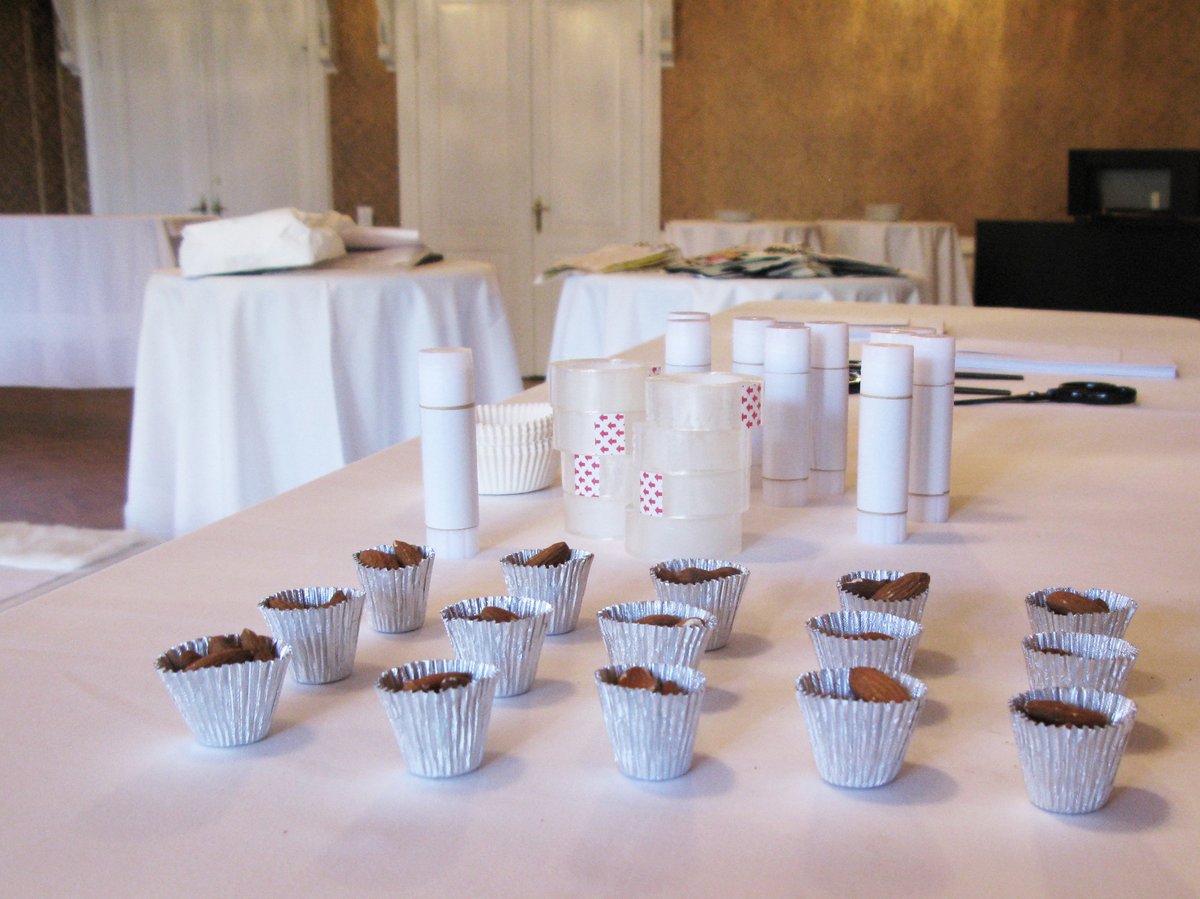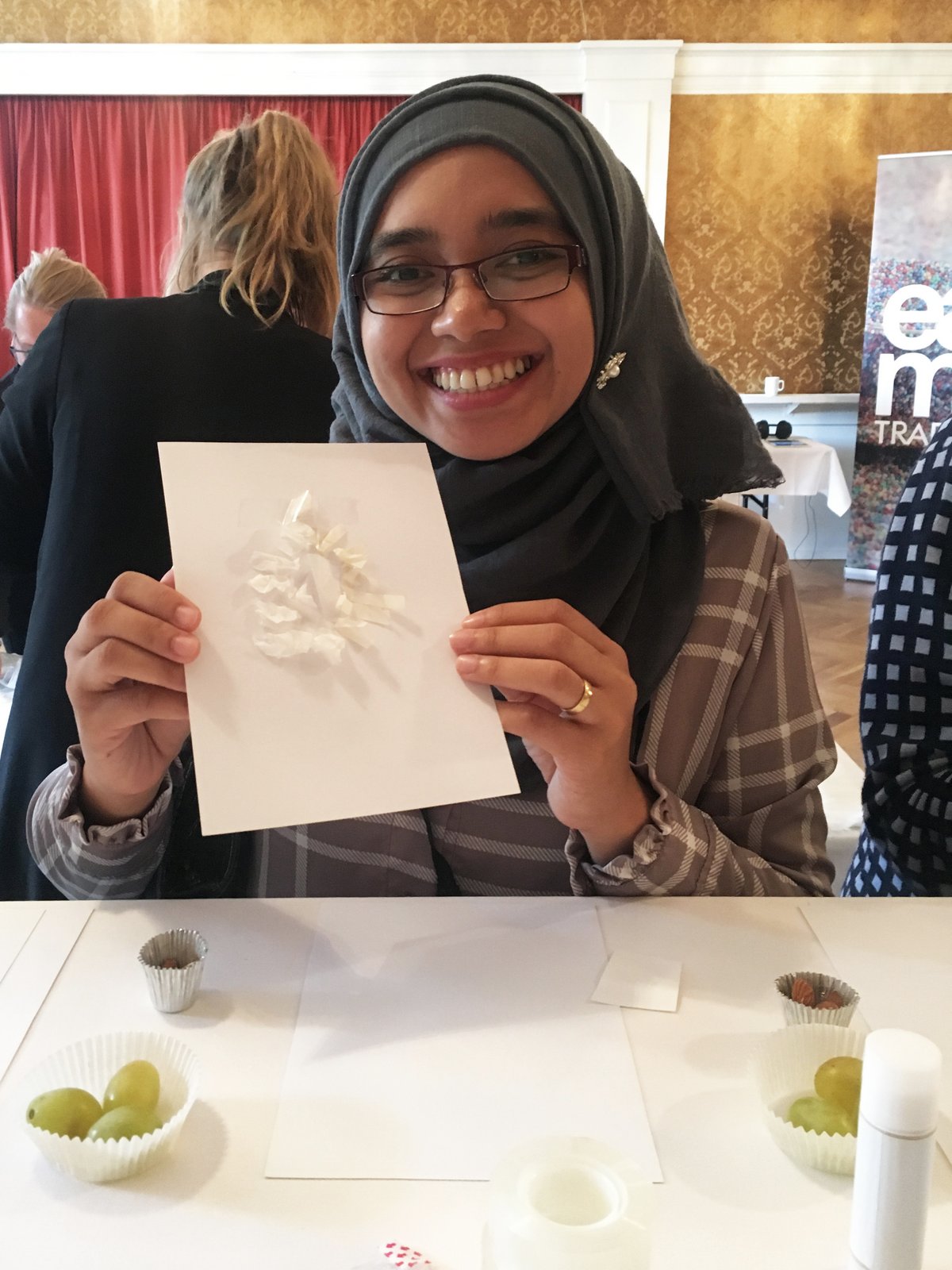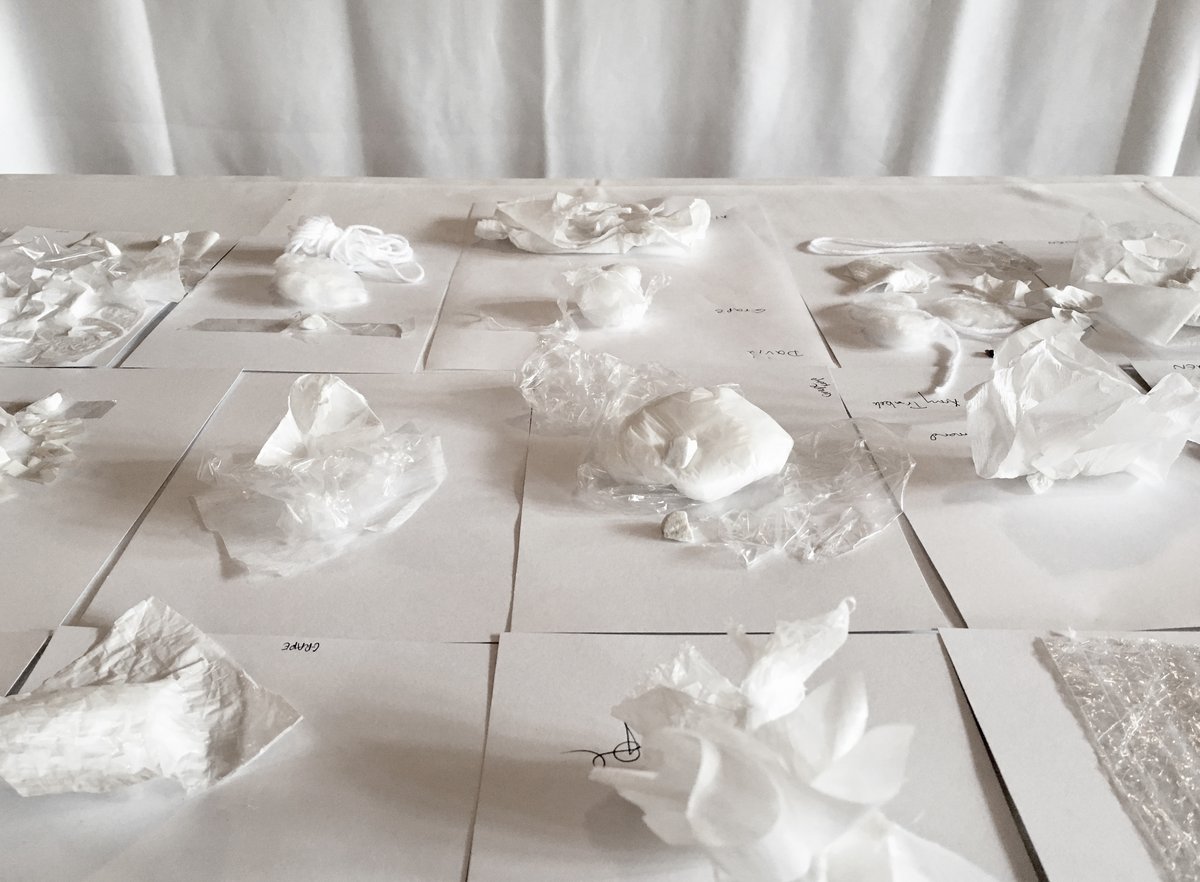FROM ABSTRACT TO TANGIBLE
By Martyna Barbara Golik and Marie Hugsted
What is the correlation between food and textiles and how can food be a starting point for designing textiles?
For us as textile designers, the relationship between food and textiles has been a great inspiration for our work. In the past years we have been investigating this correlation individually, both in theory and practice. For Creative Tastebuds we teamed up to study the field more thorough.
Senses play an important role in our work as textile designers. We touch, smell, listen, feel, taste and use these experiences as a source of inspiration. We ask ourselves questions: Does an apple taste purple? How can we express the sensation of chili in a product? And which material is closest to chocolate?
The feeling of a food texture can be used to design a new fabric. We transform the smell of the sea into a palette of colours. The taste of lemon is expressed in a beautiful pattern. And the mouthfeel of a biscuit is translated to a rug. The sky is the limit - playfulness and curiosity the base of our work.
Mouthfeel is the tactile sense of eating. It is the sensory characteristics, which are materialized by the structural qualities of food. Mouthfeel namely, became the focus of the workshop where the texture of food was a starting point and an inspiration for creative work.
Our aim was to present a methodology that challenges a creative process where the goal is to come up with shapes, materials and textures. More specifically we wanted to focus the participants on abstract experience of “touching” food so that they could turn their impressions into a tangible collage of materials and textures. To translate impression to expression.
The setup of the workshop was very simple: A “tasting table” presenting grapes and almonds and a table with approximately 25 different white materials presented as a buffet. We chose the two foods because of their contrasting textures - almond being hard, grainy and dry and the grape being wet, smooth and cold. The material buffet was presenting a wide range of materials from glossy plastic, fake fur, crisp satin, soft silk, small stones, cotton and yarn. We decided to work only in white to keep the session as simple as possible and to put a focus on taste and tactility.
The participants were all to eat the two foods. The task was to make separate collages of the almond and the grape expressed in materials and textures based on their mouthfeel. Each of the participants first had to eat an almond and afterwards go to the buffet with the materials to pick the materials that were expressing the mouthfeel the best and from that create a collage on a white piece of cardboard. The same was repeated with the grape.
The participants were all very concentrated and focused – yet laughing a lot. They went into the space of their mouth where shapes, volumes and textures grew. They focused on transforming the sense of the volatile impressions they experienced, into lasting expressions embodied in white materials.
Each session lasted for about ten minutes and around 30 participants participated. It resulted in 60 collages of the almond and the grape embodied in volumes and shapes. We received valuable feedback from the participants and interesting conversations emerged during the workshop. Our aim was to show how senses can be transformed into sensations and to transform the aesthetics behind mouthfeel.
The completed pieces will be used as a fundament for further research into this design methodology.


